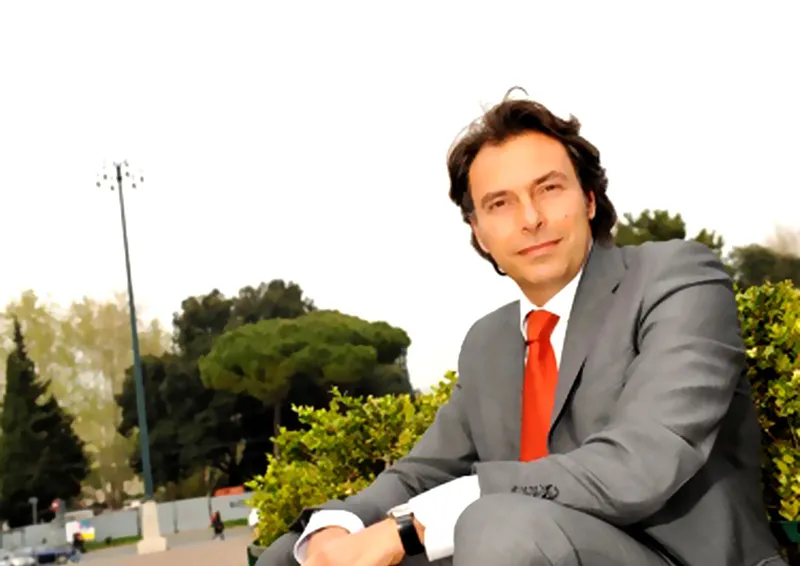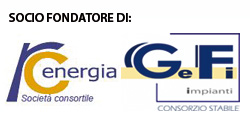Who we are
Home » Who we are

company mission
Rael’s mission is to carry out work and provide services in the technological systems sector, with the aim of maximizing the satisfaction not only of customers, but also of those who work in and for Rael, having regard to the rule of the art , the environment, energy efficiency and safety.
Andrea Carioti
our history
Let’s start by telling a story, the story of the RAEL di Carioti Giuseppe e C. S.r.l.. The company was born in Genoa in 1948 thanks to the work of its founder, Giuseppe Carioti. Giuseppe known as “Pino”, orphaned by war, attended the Marinaretti orphanage in Anzio; of lively intelligence and quick learning, he stands out and is taken care of by the director, who personally follows his instruction and education.
Pino grows up and returns to Genoa, the family’s city of origin. He is released from military service due to a shrapnel that left him blind in one eye.
However, this serious injury gives him the opportunity to specialize as an electrician: he works first at the COOPERATIVA ELETRICISTI GRANDE GENOVA and then at ICEL- Impresa Costruzioni e Lavori, also in Genoa, with profit and satisfaction, but it is not enough for him. He is ambitious and enterprising.
In 1948 Pino founded RAEL as an individual company (which in 1985 evolved into S.a.s. and subsequently, in 1997, became a joint-stock company and transformed into an LLC).
Initially the company’s activity focused on the repairs of small radio devices and the maintenance and repair of civil electrical systems: the name RAEL, in fact, derives from the union of the first two letters of the words “radio” and “electricity”.
Soon, the range of action of the RAEL extended to the field of public lighting and the enthusiasm for the reconstruction of the post-war years saw it engaged in numerous projects concerning the public lighting of various areas of the city of Genoa and its province: from the lighting of the prestigious hilly area of Righi, to the reconstruction of the lighting of the town of Recco destroyed by the war. This range of action has expanded and intensified to such an extent over the years that we can now say that there is no area of the city of Genoa in which the RAEL has not intervened for the installation of small or large public lighting systems. With the development of the company, the generational transition took place and Pino, although continuing to frequent the company’s warehouses and offices (in the meantime he had retreated to the workshop premises, where every now and then he was found perched on the top of a ladder tidying up the materials on the shelves…) passes the baton to his children Carlo and Vilma: Carlo manages the core business, Vilma the back office and administration.
It was the Sixties of the country’s impetuous development and the new generation brought innovative ideas, enthusiasm and additional professionalism which soon developed the company’s business even further; and this without losing the family character of the company, which is also enriched in the technical part by the precious contribution of Maurizio Ferrini, cousin of Carlo and Vilma, an esteemed professional electrotechnical expert, who will accompany the growth of RAEL until his premature death .
RAEL lights up “Corso Italia”, the prestigious and panoramic seaside promenade of the city; works for the University, for the Municipality, for the Civil Engineering Department; creates plants not only in Genoa, but also in other municipalities in Liguria and throughout the North-West, the sector of the country that drove Italian development in those years. Carlo patents and develops the luminous signs: the luminous road signs quickly expand throughout the city, becoming a national model, and represent the first of the many innovations that have characterized the company’s path over time.
Soon, the range of action of the RAEL extended to the field of public lighting and the enthusiasm for the reconstruction of the post-war years saw it engaged in numerous projects concerning the public lighting of various areas of the city of Genoa and its province: from the lighting of the prestigious hilly area of Righi, to the reconstruction of the lighting of the town of Recco destroyed by the war. This range of action has expanded and intensified to such an extent over the years that we can now say that there is no area of the city of Genoa in which the RAEL has not intervened for the installation of small or large public lighting systems. With the development of the company, the generational transition took place and Pino, although continuing to frequent the company’s warehouses and offices (in the meantime he had retreated to the workshop premises, where every now and then he was found perched on the top of a ladder tidying up the materials on the shelves…) passes the baton to his children Carlo and Vilma: Carlo manages the core business, Vilma the back office and administration.
It was the Sixties of the country’s impetuous development and the new generation brought innovative ideas, enthusiasm and additional professionalism which soon developed the company’s business even further; and this without losing the family character of the company, which is also enriched in the technical part by the precious contribution of Maurizio Ferrini, cousin of Carlo and Vilma, an esteemed professional electrotechnical expert, who will accompany the growth of RAEL until his premature death of him.
RAEL lights up “Corso Italia”, the prestigious and panoramic seaside promenade of the city; works for the University, for the Municipality, for the Civil Engineering Department; creates plants not only in Genoa, but also in other municipalities in Liguria and throughout the North-West, the sector of the country that drove Italian development in those years. Carlo patents and develops the luminous signs: the luminous road signs quickly expand throughout the city, becoming a national model, and represent the first of the many innovations that have characterized the company’s path over time.
Soon, the range of action of the RAEL extended to the field of public lighting and the enthusiasm for the reconstruction of the post-war years saw it engaged in numerous projects concerning the public lighting of various areas of the city of Genoa and its province: from the lighting of the prestigious hilly area of Righi, to the reconstruction of the lighting of the town of Recco destroyed by the war. This range of action has expanded and intensified to such an extent over the years that we can now say that there is no area of the city of Genoa in which the RAEL has not intervened for the installation of small or large public lighting systems. With the development of the company, the generational transition took place and Pino, although continuing to frequent the company’s warehouses and offices (in the meantime he had retreated to the workshop premises, where every now and then he was found perched on the top of a ladder tidying up the materials on the shelves…) passes the baton to his children Carlo and Vilma: Carlo manages the core business, Vilma the back office and administration.
It was the Sixties of the country’s impetuous development and the new generation brought innovative ideas, enthusiasm and additional professionalism which soon developed the company’s business even further; and this without losing the family character of the company, which is also enriched in the technical part by the precious contribution of Maurizio Ferrini, cousin of Carlo and Vilma, an esteemed professional electrotechnical expert, who will accompany the growth of RAEL until his premature death of him.
RAEL lights up “Corso Italia”, the prestigious and panoramic seaside promenade of the city; works for the University, for the Municipality, for the Civil Engineering Department; creates plants not only in Genoa, but also in other municipalities in Liguria and throughout the North-West, the sector of the country that drove Italian development in those years. Carlo patents and develops the luminous signs: the luminous road signs quickly expand throughout the city, becoming a national model, and represent the first of the many innovations that have characterized the company’s path over time.

